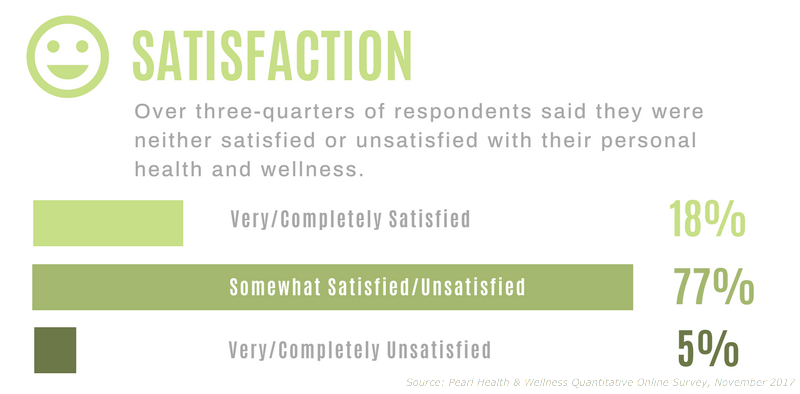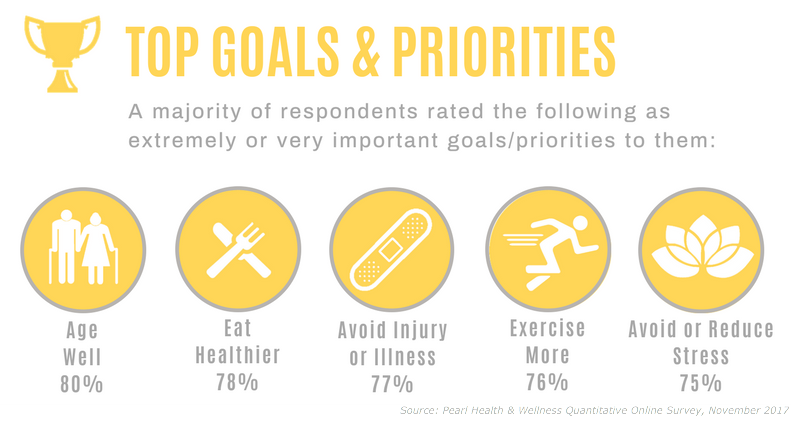In Canada, health & wellness continues to evolve, creating new demand for healthy products and services in food & beverages, retail, restaurants and personal care. To find opportunities in the health and wellness space, we surveyed 1,000 Canadian adults, with representation across ages, genders and provinces, in English and French Canada, to understand their health & wellness attitudes and behaviours.
This is the 1st of a 3 Part blog series that will provide an introduction to our Health & Wellness in Canada study. We hope that you’ll find some insight that will lead to growth opportunities for your business.
Click here to DOWNLOAD the INFOGRAPHIC
1. Canadians need support on their health & wellness journey

There is a lot of room for improvement, as over 80% of Canadians not Very/Completely Satisfied with their personal health & wellness. Men are more satisfied than women. Gen X (37-51 years of age) are less satisfied than the other generational segments. In terms of regions, Ontario was more satisfied, while Quebec was less satisfied.
What does this mean for marketers?
To help Canadians on their health & wellness journey, get to know their pain points and show how you will help them and how it will improve their lives for the better. Those segments that were less satisfied with their health & wellness may offer larger business opportunities.
2. There is an opportunity to provide health & wellness solutions in the areas of food, exercise and stress reduction

Canadians perceive health & wellness to be a journey as their goals are a mix of actions and results. Eating healthier, exercising more and reducing stress are their top priority actions, while aging well and avoiding injury & illness are the results they aspire to. Eating healthier is a universal goal shared by all segments.
The following segments rated some goals higher:
- Men prioritize avoiding injury & illness
- Women want to avoid stress
- Boomers & Gen X place higher emphasis on aging well and avoiding injury & illness
- Millennials prefer exercising more, while the sub-segment of Millennials with kids are additionally focused on improving their sleep
What does this mean for marketers?
To develop health & wellness solutions that solve their pain points, engage with consumers to understand their underserved needs. Conduct rapid prototyping by creating new ideas, gaining consumer feedback, then refining the idea to get to better solutions.
3. Position health & wellness brands to deliver functional and emotional benefits

Functional benefits are the most tangible outcomes of achieving health & wellness, however Canadians also strongly associate health & wellness with the emotional benefits of feeling more cheerful, balance and vitality.
Here are some segments that over-index with specific emotional benefits:
- Women prioritize fulfillment over balance
- Boomers prefer advantage versus balance
- Millennials rank fulfillment higher than vitality
What does this mean for marketers?
To create a strong health & wellness brand, appeal to the minds and hearts of Canadians. In highly competitive markets, it can be difficult to sustain a functional advantage. Owning an emotional benefit can be a more durable brand benefit to a consumer.
For more details on our Health & Wellness in Canada study, contact John at: johnchan@pearl-strategy.ca
Source: Pearl Health & Wellness Quantitative Online Survey, November 2017




